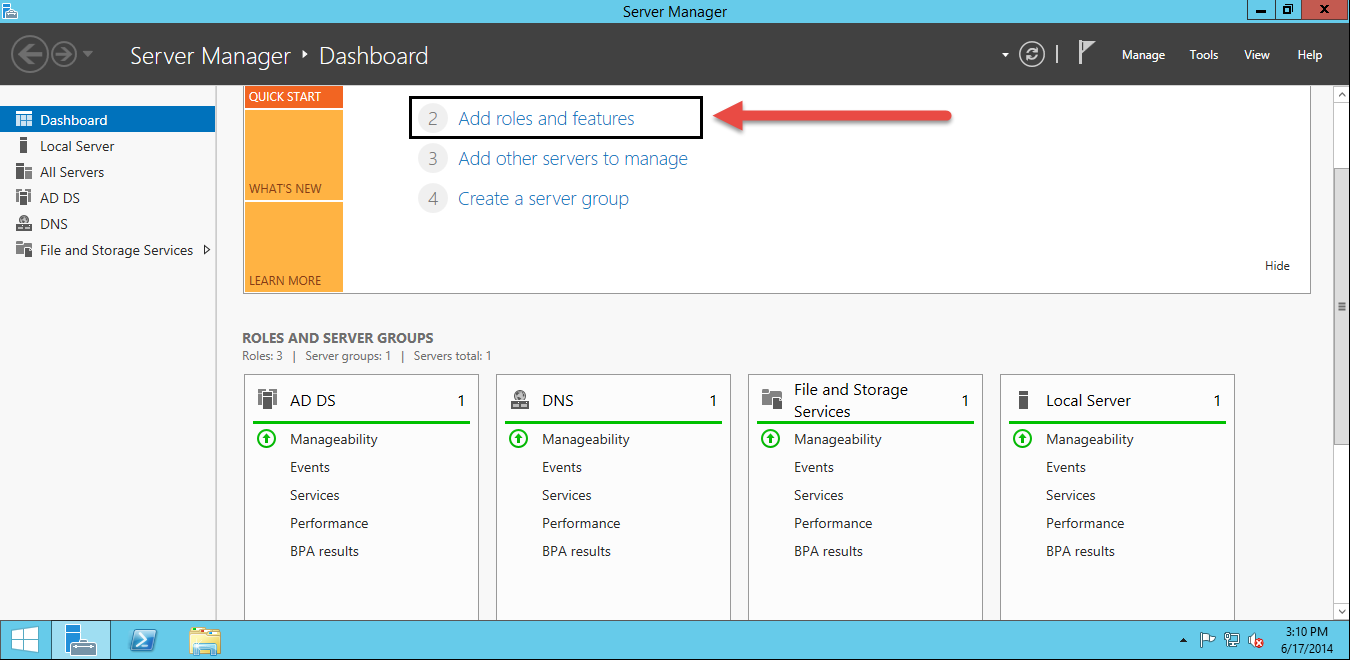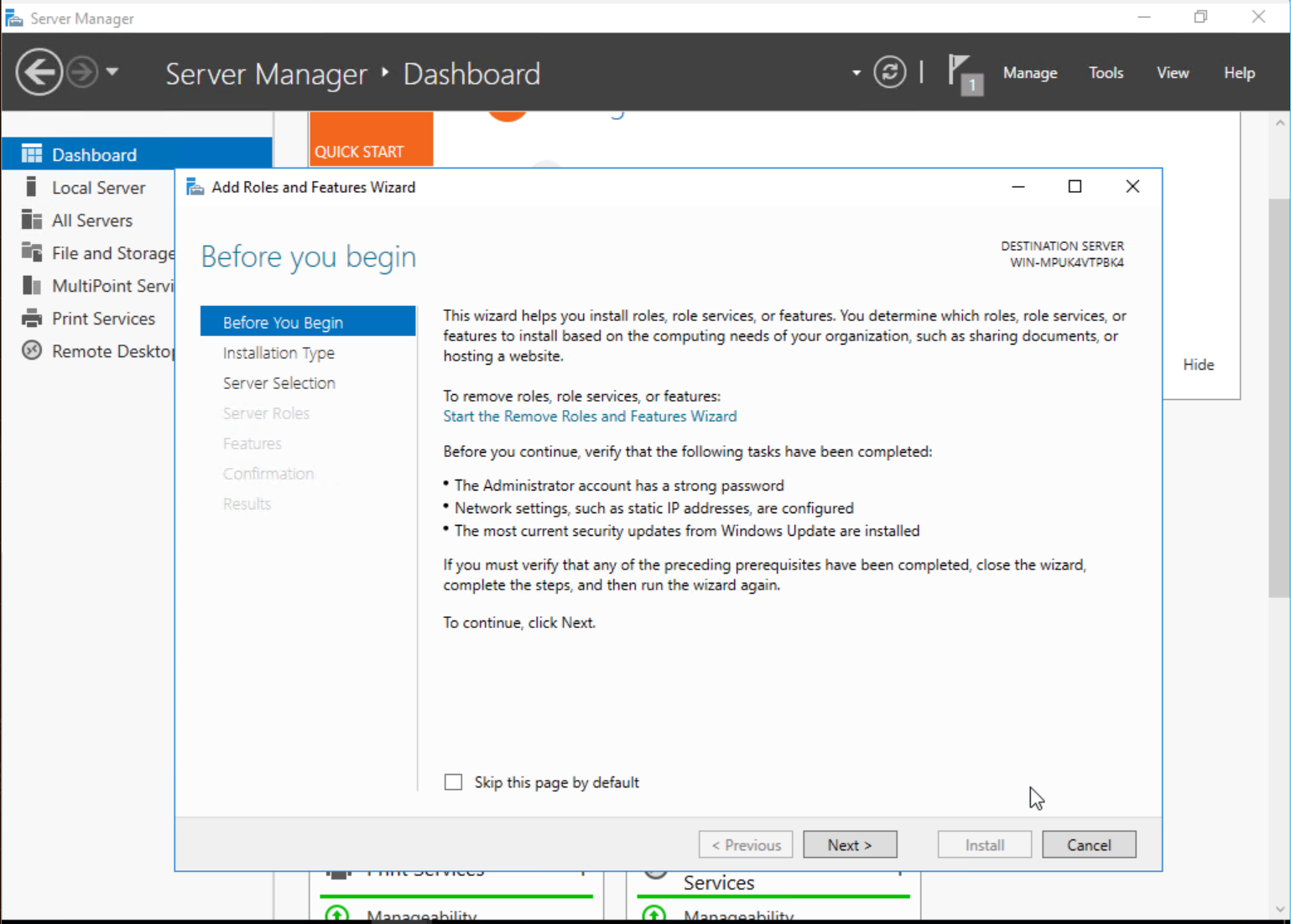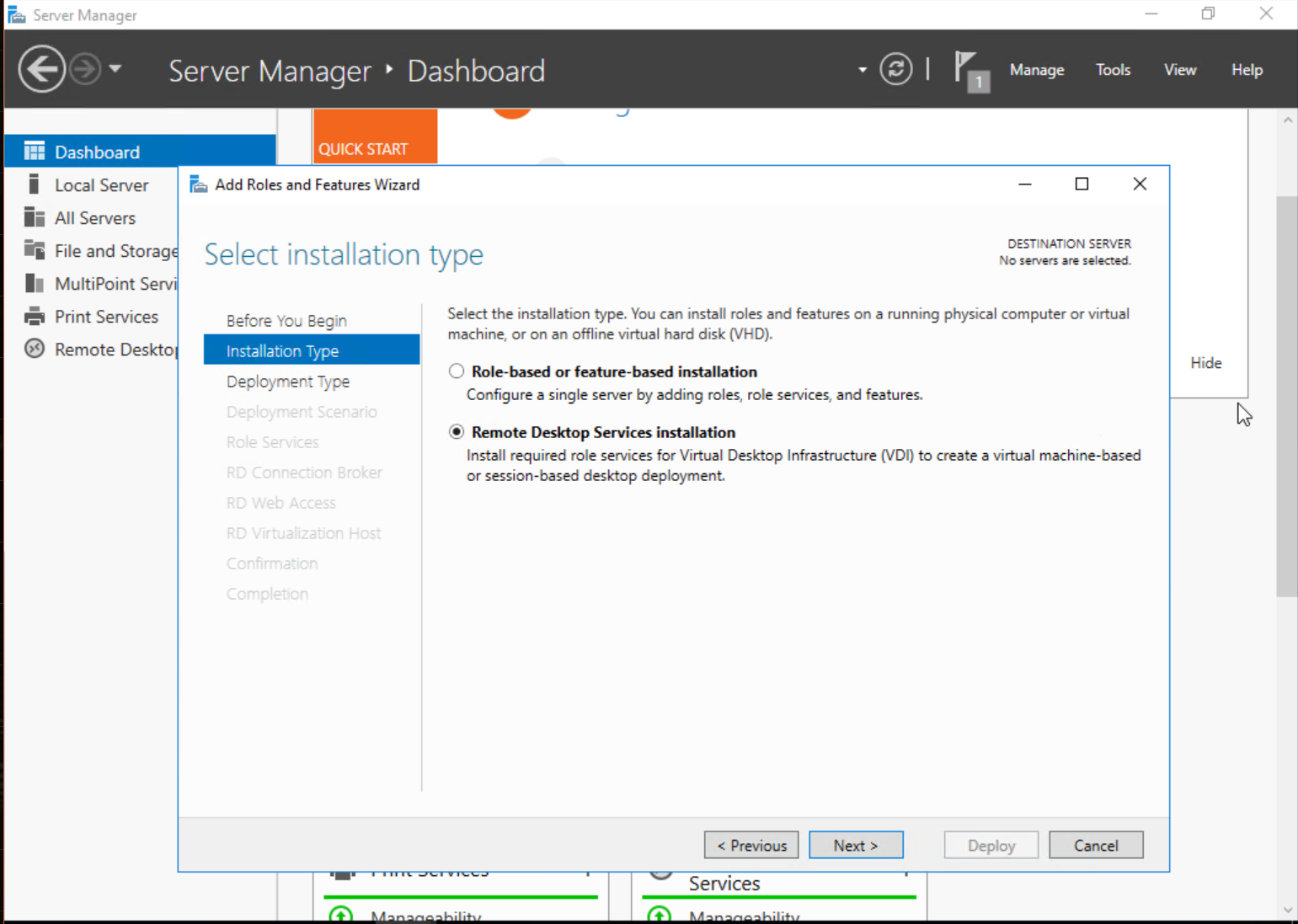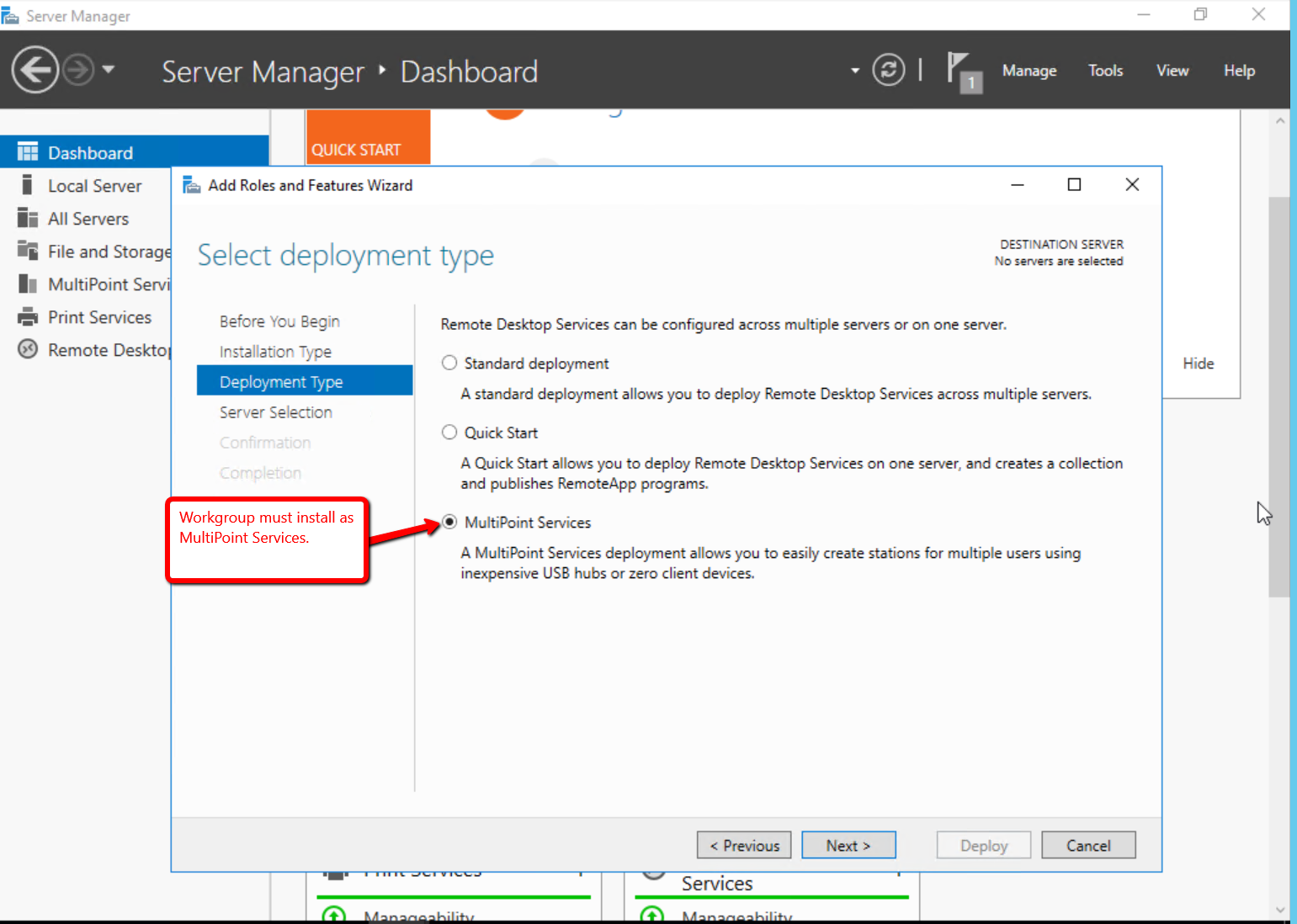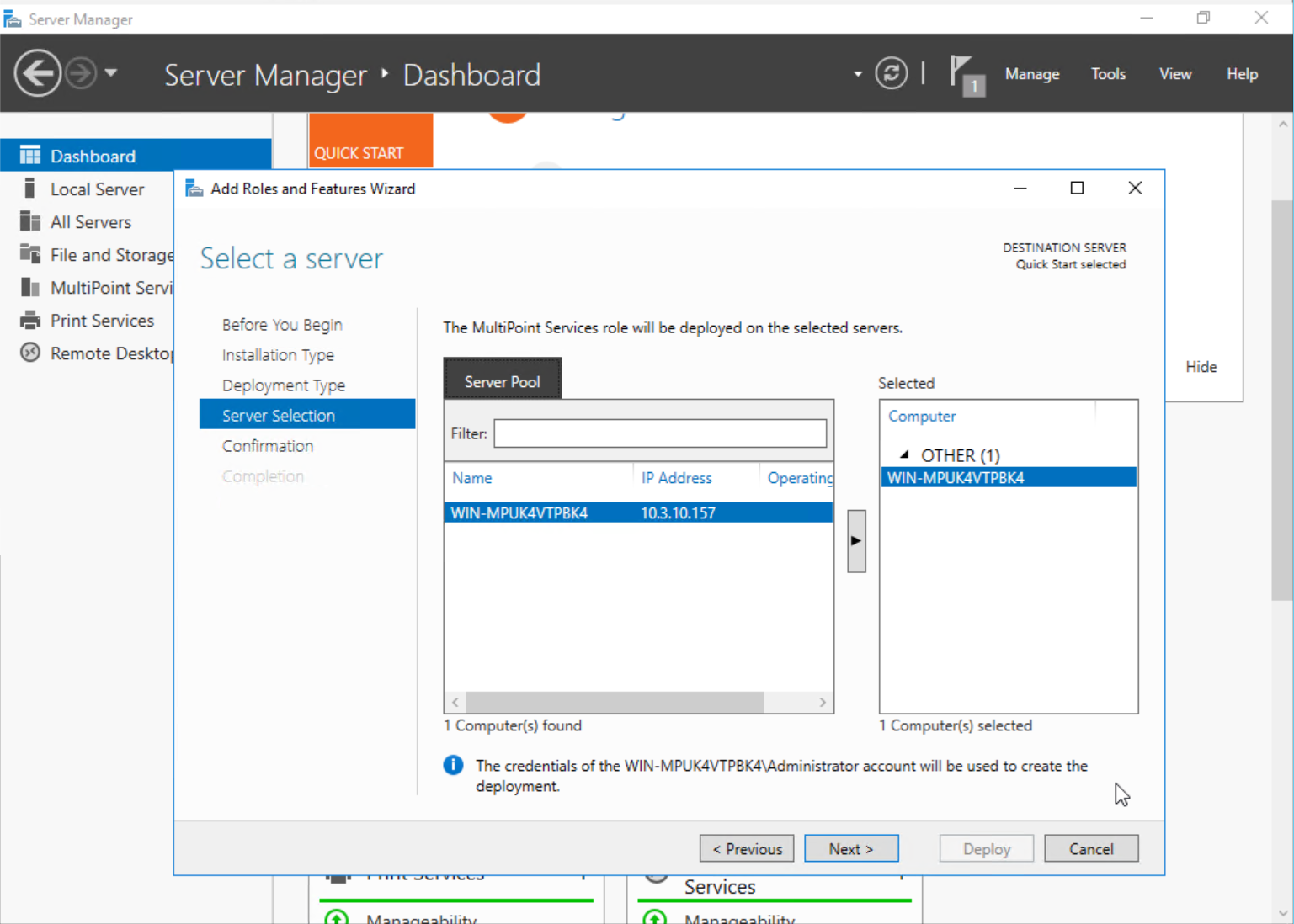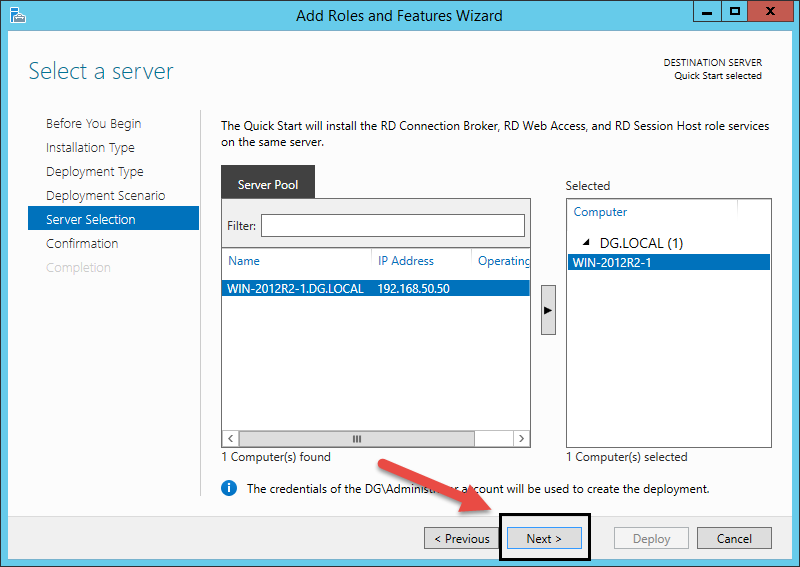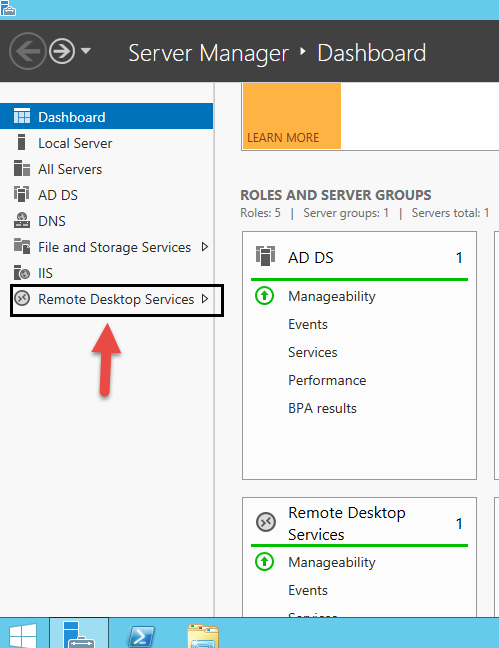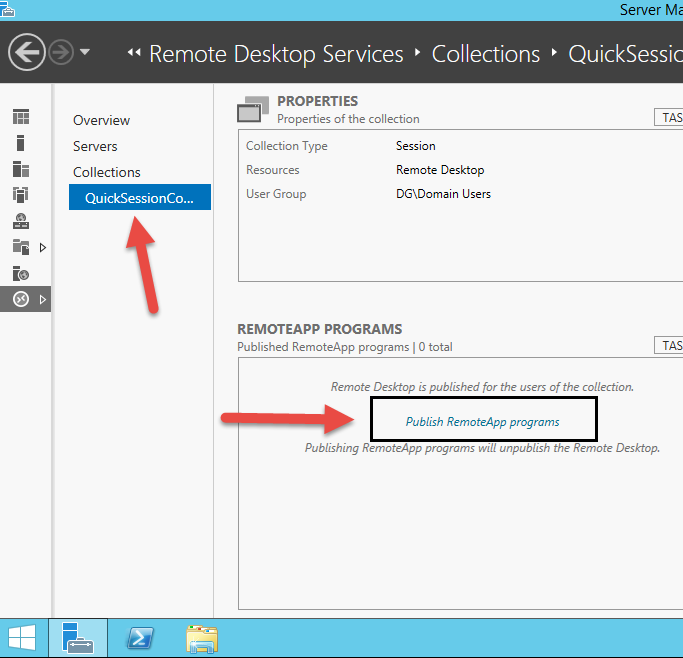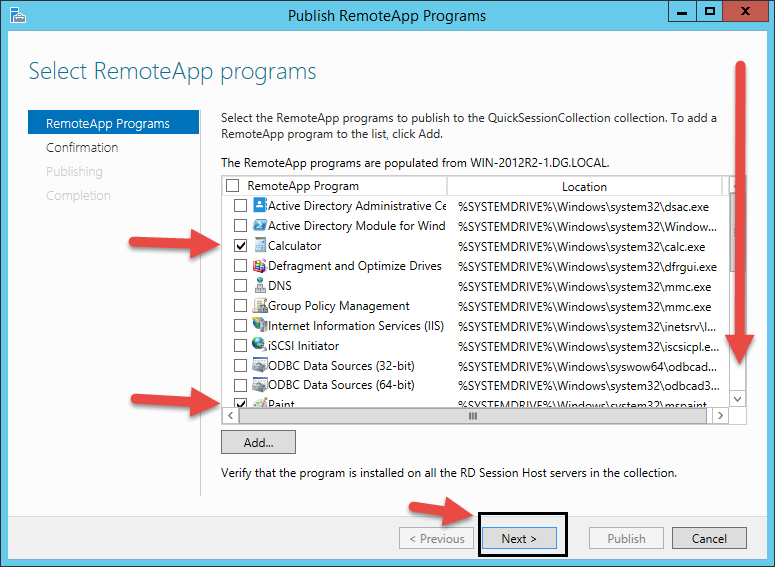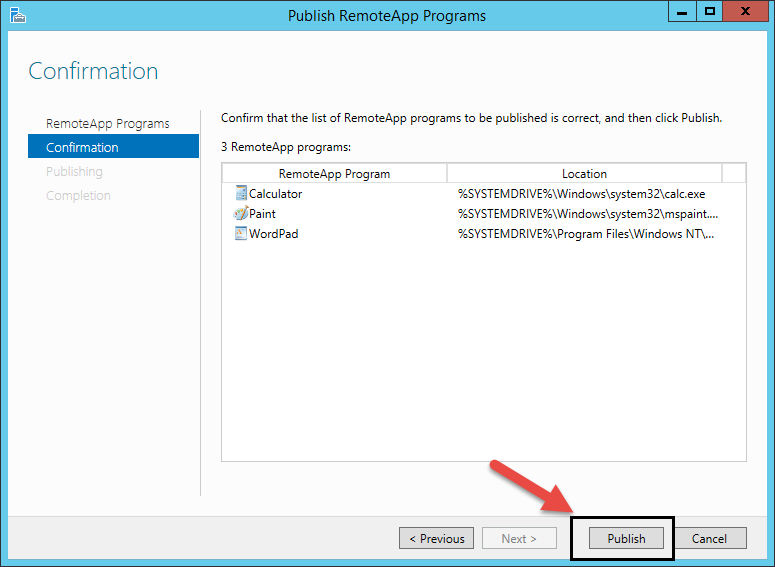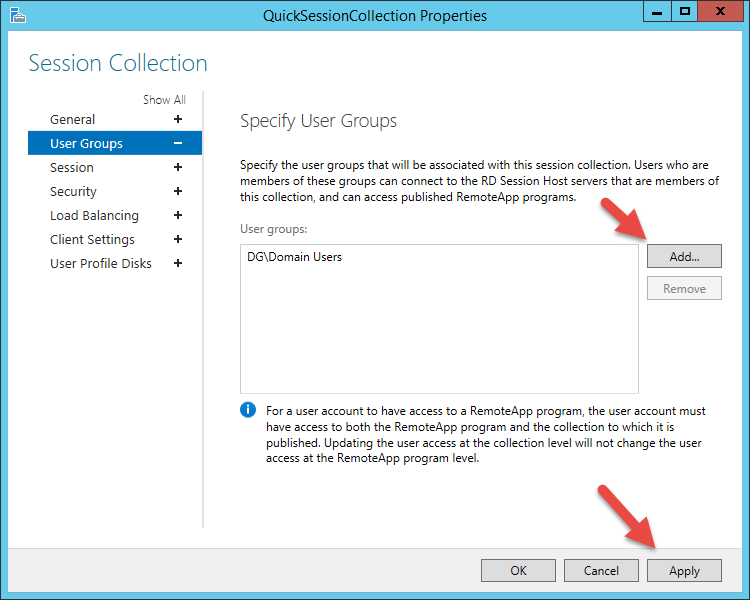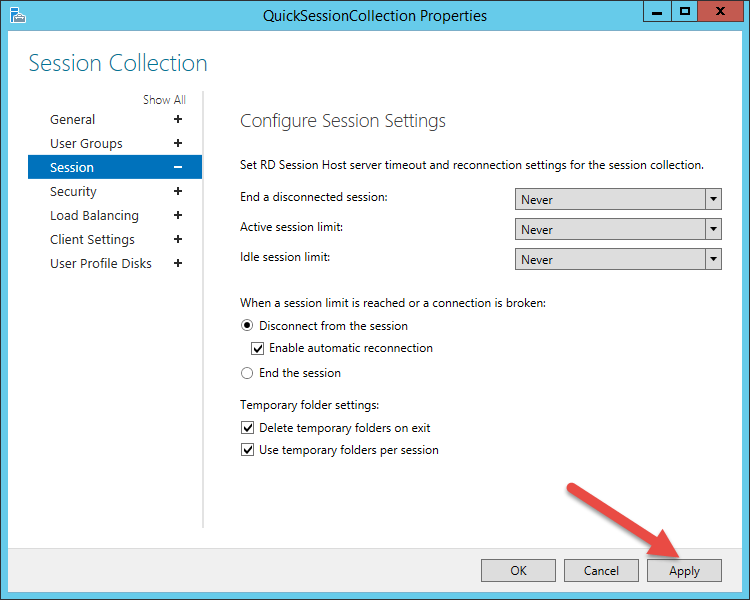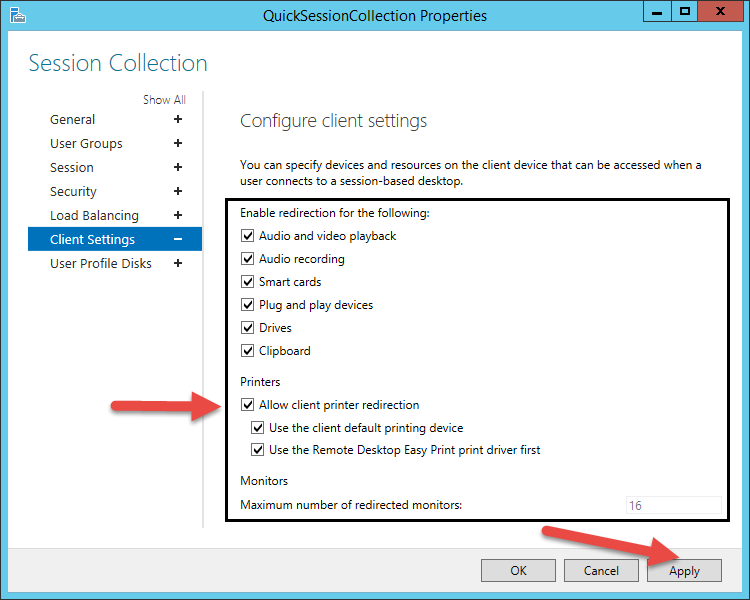|
If you would like to speak with one of our engineers, please Submit a Question or give us a call at the phone number here. In North America, To route your phone support request directly to a technical support engineer, call toll-free 1-888-382-1583 or 1-440-646-3434, select Option 3 (Technical Support), then select Option 5 (More Options). When prompted, enter the ThinManager Direct Dial Code 201. |
Difference between revisions of "Windows Server 2016 RDS Role Installation"
(Created page with "'''Setup Remote Desktop Services''' Starting with Windows Server 2012, it is highly advised that the server be part of a domain as the Remote Desktop Services graphical confi...") |
(No difference)
|
Revision as of 18:15, 14 March 2018
Setup Remote Desktop Services
Starting with Windows Server 2012, it is highly advised that the server be part of a domain as the Remote Desktop Services graphical configuration is only available to Domain Admins.
Steps:
Open Server Manager.
Click on Add Roles and Features.
Click Next.
Select Remote Desktop Services installation, and then press Next.
Select MultiPoint Services, and press Next.
Select Session-based Desktop deployment, and press Next.
It should select automatically create a server pool, and add your local server. Press Next.
Check the Restart the destination server… box, and press Deploy.
A progress screen will appear and display information on the new deployment progress. The server will automatically restart if the deployment is successful. It may also restart one or more times during the deployment process. After each restart, it will go back into Server Manager and post the status of the deployment.
After the deployment completes successfully press Close.
At this point, your Remote Desktop Server is setup and will allow you to make Remote Desktop connections to this server. If you would like to access individual applications using AppLink, follow these steps:
In the Server Manager Dashboard, press Remote Desktop Services in the link on the left side of the window.
On the next window, select QuickSessionCollection, and then press the link for Publish RemoteApp Programs.
Select the applications you want to launch from the list that appears. If you don’t see your specific application, then use the Add… button to browse for it. If it still does not appear, make sure the application is properly installed on this server.
In the example here, we have selected Calculator, Paint, and Wordpad. Use the scroll bar to the right to scroll down for more applications.
Press Next once you have selected your applications.
Verify that all of the applications you want to run are listed, and press Publish.
You need to allow Command Line Parameters to specify specific files or URLs. Right click on the published application and select Edit Properties.
This opens the Properties window. Select Parameters and select Add any command-line parameter. This will allow you to specify a file, URL, *.CLI, *.SCU, or other file to run using AppLink.
Once it completes, it will go back to the previous screen. At this point, we need to now look at some of the other settings.
In the Server Manager, with Remote Desktop Services > Collections > QuickSessionCollection selected, press on the Task drop down shown in the image below, and then select “Edit Properties”.
If you would like to change the name of the collection to something other than QuickSessionCollection you can do it here, and press the Apply button.
Select the User Groups item in the menu on the left, and add the User Groups that you want to be able to remotely connect to your server. Use the Add button, and Apply once you’ve finished.
Select the Session item in the left menu, and make any adjustments you would like to use for your system. The defaults here will work fine for ThinManager. Press Apply when complete.
Press the Security item in the Menu to the left. Make sure your settings match those shown in the image below. Key for ThinManager clients is that you UNCHECK the Allow Connections Only from… item.
Note: Network Level Authentication (NLA) is supported in Firmware Package 7.1.3 and later. You can leave the Allow Connections Only from… item checked.
Press Apply once finished.
Select the Client Setting item in the menu to the left. Select the items you wish to change, and press Apply. The default settings (shown below) should work fine for you ThinManager system.
You may now press the OK button to close the dialog box. At this point, your server is ready for ThinManager to use it as a Remote Desktop Server (Terminal Server).
